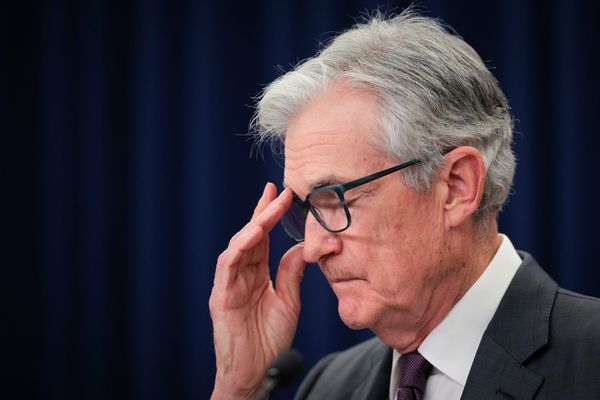Google Pay is emerging as the secret weapon in Alphabet's plan to dominate India's boom in online shopping, social networking, video streaming and cloud gaming.
It surged on pandemic tailwinds to become the second-biggest Indian mobile payments app. Facebook parent Meta Platforms and Amazon are also among Chinese and U.S. tech giants investing billions to build out payment apps for the subcontinent, challenging homegrown Paytm and PhonePe, which are backed by Alibaba and Walmart, respectively.
It's not hard to see why.
"All these players are in the market simply because they want to ride on India's digital growth story, and payments are critical to building a digital economy, something that China has demonstrated," said Sampath Sharma Nariyanuri, fintech analyst at S&P Global Market Intelligence.
In 2020, Indian mobile payments jumped 67% to $478 billion, according to S&P Global. Amid the lingering pandemic, payments via mobile apps were tracking for $1 trillion in 2021 based on August volumes, Nariyanuri told Investor's Business Daily. Growth is off a low base on the basis of transactions per capita, he added. But as a percentage of GDP, mobile payments rose to 23% in the final quarter of 2020, from 12% a year earlier.
But profits? Those may be a long way off.
India Mobile Payments Industry
By 2026, Paytm projects the India mobile payments market to reach $3.1 trillion in value, led by business-to-consumer transactions. Much of the early growth has come from low-value consumer-to-consumer transactions, which represent more than 80% of mobile payments.
As for the overall digital payments market, including cards, Paytm forecasts it could reach $40 trillion-$50 trillion by 2026, up from about $20 trillion in 2021.
Unlike neighboring China, India offers a more friendly face to U.S. giants. Besides Alphabet, Facebook, Amazon and Walmart, Netflix and Disney are jostling there with local giants to dominate in e-commerce, social media and entertainment.
Payments are a common battleground. A robust payments system will underpin their own core businesses, as much as India's digital growth story.
"Millions of consumers in India start their digital transactions with popular payment apps," before graduating to watch Netflix or shop on Amazon, Nariyanuri said. And for merchants and businesses, "payments apps serve as a gateway to connect with consumers on mobile."
Join IBD experts as they analyze actionable stocks in the stock market on IBD Live
Popular Payment Apps
Google Pay in India launched in 2018. Amazon Pay and Facebook's WhatsApp Pay debuted in 2020 as the pandemic boosted contactless payments. Walmart-owned Flipkart, a leading Indian e-commerce business, owns and closely integrates PhonePe, which means "on the phone" in Hindi, as a payment method.
The driver of growth is the country's Unified Payments Interface or UPI, which provides the plumbing behind mobile payments. It's not unlike Zelle in the U.S. or other global real-time payment systems that enable bank account-to-account transfers using just a phone number or e-mail address.
But UPI is unique in its embrace of nonbank players, such as Google, Nariyanuri said. All the major Indian payment apps are UPI-based, which has contributed to their swift rise. In fact, mobile payments are practically synonymous with UPI payments, with nearly 19 billion transactions processed in 2020.
For example, Google Pay in India leverages the UPI protocol to offer seamless payments, bypassing card networks. Google Pay is still card-based in the U.S., where Zelle shuts out nonbanks. And Google Pay in India requires just one sponsor bank to move money across the entire UPI system of participating banks. In contrast, Google Pay in Singapore needs multiple banking integrations.
In addition, U.S. technology companies have customized their payment apps with local languages. They lavished cashbacks to capture a price-sensitive Indian consumer.
Now, to make those customers sticky, they are turning into "super financial apps," said Mihir Gandhi, a partner at PricewaterhouseCoopers who leads its India payments practice.
Indian consumers don't just use payment apps to send money to peers or to pay in shops or online. They use those apps to recharge prepaid mobile plans, pay utility bills, buy digital gold and invest in mutual funds. Merchants get microloans and set up virtual stores inside the Google Pay app.
'Perfect Storm' For Mobile Payments
On the subcontinent, American tech giants see a vast, growing and sophisticated market. India reports 600 million smartphone users, yet the country's adding 25 million new users every quarter, while the U.S. nears smartphone saturation.
"Access to these smartphones, in conjunction with poor banking outreach in India, has created the perfect storm for a surge in mobile payments," valuation guru and NYU finance professor Aswath Damodaran wrote Oct. 4, while analyzing Paytm's domestic IPO filing.
Just four players controlled 95% of India's mobile payments market in the first half of 2021, S&P Global finds. Walmart's PhonePe held a 44% share and Google Pay 35%.
Paytm, backed by Warren Buffett's Berkshire Hathaway and China's Alibaba, claimed a share of 14%. Amazon Pay had a share of 2%.
Also in the mix, with negligible shares for now, are Facebook's WhatsApp Pay and Jio Pay, from Asia's richest man Mukesh Ambani, who runs the Reliance Jio empire.
Over the last few years, Google Pay and PhonePe leapfrogged payments pioneer Paytm by offering slick apps with a sharper focus on faster payments, said Gandhi of PricewaterhouseCoopers.
But Paytm leads in building out financial services, such as insurance brokering and wealth management. Unlike major peers, it is a licensed digital bank. It also runs an e-commerce mall.
Among the new entrants, Gandhi likes Amazon Pay because of its commerce use case. "I think it could be in the top three very soon," he said. Though late to the game, the U.S. e-commerce titan has invested close to half a billion dollars in its Indian payments business, while plowing $6.5 billion into the country overall.
Nariyanuri thinks highly of WhatsApp Pay. Facebook's WhatsApp, a hugely popular chat app in India, boasts more than 400 million users. "I would say the market share is up for grabs," he said.
Time The Market With IBD's ETF Market Strategy
Paytm IPO
Despite rapid growth, payment apps are struggling to turn a profit. Losses are growing faster than revenue for most. Cash burn is high.
In fiscal 2020, the four major UPI-based payment apps reported an aggregate revenue of only $965 million, according to S&P Global.
A preliminary $2.2 billion IPO filing by Paytm showed the total value of payments to merchants grew 33% in the year ended last March. But Paytm's payment and financial services revenue rose just 10.6% in the same period, while total revenue fell 14.6%.
After a disastrous listing last November, which saw shares plunge 40% on local exchanges in the first two days of debut, Paytm stock is now languishing 53% below its issue price.
In the absence of a revenue model, Nariyanuri warns India mobile payment players will keep hemorrhaging money.
"None of these players has any control over pricing," he added. "They are all part of a payments system built by a banking consortium that works at the behest of the Indian government."
India heavily regulates financial services. Rules are hazy and shifting.
They initially allowed mobile payments to carry limited fees. Then in 2019, revised guidance eliminated any customer or merchant fees, such as interchange fees.
By end of 2022, Google Pay and PhonePe must comply with new rules seeking to cap their share of UPI volumes at 30%, to enforce parity.
Catch The Next Big Winning Stock With MarketSmith
Path To Profitability
Currently, mobile payment companies are scrambling for a viable commercial model. But analysts see a path to profitability.
First, there's lobbying to reinstate scrapped fees. Gandhi's hopeful that "some bit of pricing" will return. The companies were making money earlier when they were allowed to charge for UPI transactions, he said.
Second, the major payment apps are cross-selling financial services to make up for lost payment fees. Even emerging Amazon Pay and WhatsApp Pay are building out lending and insurance businesses.
"That's where monetization opportunities exist," Nariyanuri said.
Third, payments are a key tool to gather data on customer spending patterns. Companies can potentially monetize that data, or at least use it to enhance offerings.
But for now, financial services are a nascent business. And globally, there's rising concern about the handling, privacy and security of customer data.
So Nariyanuri sees another end game.
"Payments are like a grease to create a virtuous cycle of internet activity, which could drive advertising revenue or e-commerce revenue," he said. In other words, for Amazon, Google and Facebook, their payment apps are loss leaders, helping to keep users in their broader, profitable digital ecosystems.
India Mobile Payments For Everything
In India, payment apps are cannibalizing the use of cash and cards, though cash remains king.
PhonePe and Google Pay are a way of life. They're how Indians pay for everything from house rent to a Disney Plus Hotstar subscription, a far cry from the Google Pay upheaval here at home. But there's more to it.
"People also use payment apps to pay for really small-ticket transactions," Nariyanuri said.
India's a country where millions get by on $2 per day or less. Many of her people buy a 1-rupee (about one cent) shampoo sachet, foregoing an entire bottle. Instead of purchasing a pack of cigarettes, they buy a single cigarette.
To pay for even those tiny purchases, Indians increasingly use mobile payment apps. They scan QR codes to complete transactions at "kirana" or mom-and-pop stores. Even sidewalk vegetable vendors flourish QR code stickers on their carts and tarps.
Meanwhile, banking and card giants are struggling in the digital race. Crashes at data centers hit HDFC and ICICI, two of the country's biggest banks. In India, Mastercard and Visa are seeing card usage contract because payment apps do away with merchant fees.
Given the surge for payment apps, U.S. Big Tech will keep investing in the country, Nariyanuri says. Everyday American investors may follow. After big Indian banks listed in the U.S. stock market, payment startups like Pine Labs, backed by Mastercard and PayPal, eye a U.S. initial public offering.
"The growth story still has a lot of tailwinds," Nariyanuri said.







